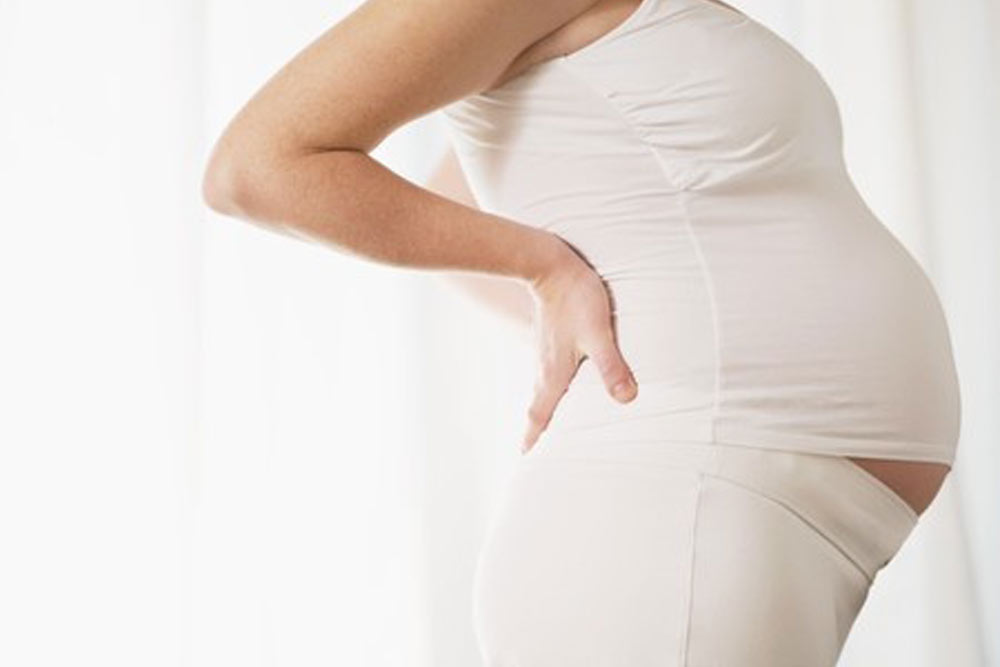The normal spinal column supports our posture, stabilizes our limbs relative to our trunks, supports our abdominal and thoracic regions, and protects our neural elements. Scoliosis is a condition in which the spine is curved in the coronal or frontal plane.

There are several different types of scoliosis. The most common types are:Idiopathic Scoliosis means literally “of undetermined cause.” This type of scoliosis is thought to be genetic, involving multiple genes and a concept called variable penetrance. This means in each generation there is variability in how strongly the genes are expressed, or how severe the curve is.
|
Having scoliosis does not mean that you will be unable to have children or will have trouble with a normal birth. Scoliosis has no effect on conception and in most cases women have no problems with pregnancy and labor. If you have metal instrumentation in your spine you should consult your midwife and obstetrician to ensure that you have a safe and comfortable delivery.
A case control study conducted over 20 years found no correlation between curve progression and age at first pregnancy. Pain was a minor reason for limitation, and some experienced a slight negative effect in their sexual life. Functional sexual discomfort requires education on pain-lessening sexual positions and empathic support/counseling to ease embarrassment during unclothed intimacy. This is all in the effort to decrease the anxiety and stress impact on hypothalamic secretion of GnRH. A rare but reported association exists between congenital scoliosis and mullerian duct deformities, namely isolated agenesis of the uterine cervix.
A study of 175 women was published on effect of scoliosis on pregnancy and delivery. No specific problems that were directly related to the scoliosis were noted except for four patients, in whom delivery posed difficulties. The incidence of cesarean section was one-half of the national average, and no sections were directly related to the mother’s scoliosis.
Watch Out
- Women with scoliosis have difficulty compensating for this displacement related to skeletal narrowing of the thoracic cavity. Losses of the normal adaptive mechanism lead to V/Q mismatches and increased work of breathing. Some women may require ventilatory support, with successful management using non-invasive ventilatory support.
- Deep-seated back pain can generally arise during pregnancy. Studies show that there is no appreciable difference between scoliosis patients and women without scoliosis. The management of pain depends on whether the pain is lumbar or sacroiliac in nature.
- For delivery, depending on degree of spinal deformity, regional anesthesia may not be a possibility.
- Patients need to be educated on shifting center of gravity to avoid compounded joint discomfort from scoliosis and pregnancy.
- Barrier methods (diaphragm, cap, sponge) should be choices for patients who are comfortably able to access their vaginal area and little or no cervical displacement has occurred related to spinal curvature affecting diaphragm fit. Intrauterine devices (IUDs) are another option, although insertion may be difficult in scoliosis because woman may experience adductor spasms of the thighs.
Which form of birth is sensible with scoliosis?

More and more Caesarian sections are being performed nowadays for the most varying reasons. But more often they are not indicated in order to bring about a safe birth for mother and child. It is scientifically demonstrated that problems can only arise during pregnancy and birth among a group of scoliosis patients not worth mentioning. Otherwise there is no evidence that scoliosis could negatively influence the course of events during birth.
There is no evidence that scoliosis patients should have a Caesarian section performed due to scoliosis. Interestingly enough, the frequency of a Caesarian section birth among scoliosis patients in the USA at the end of the 1980s was half of the national average
Pain management becomes an important part of pregnancy with scoliosis because the pain can get tough to handle during actual delivery when you have to handle the baby as well.
Always clarify your concerns or problems and then proceed. Experienced professionals should be sought for clarification. Blanket opinions or statements that general problems emerge with scoliosis during pregnancy are erroneous.
Ref:
Related Links
- The Basic Makeover for your Posture
- Scoliosis – abnormal curvature of the spine
- The Stages of Labor & Delivery
- Top 10 Yoga Poses to Heat Up Your Sex Life
Disclaimer
The Content is not intended to be a substitute for professional medical advice, diagnosis, or treatment. Always seek the advice of your physician or other qualified health provider with any questions you may have regarding a medical condition.

